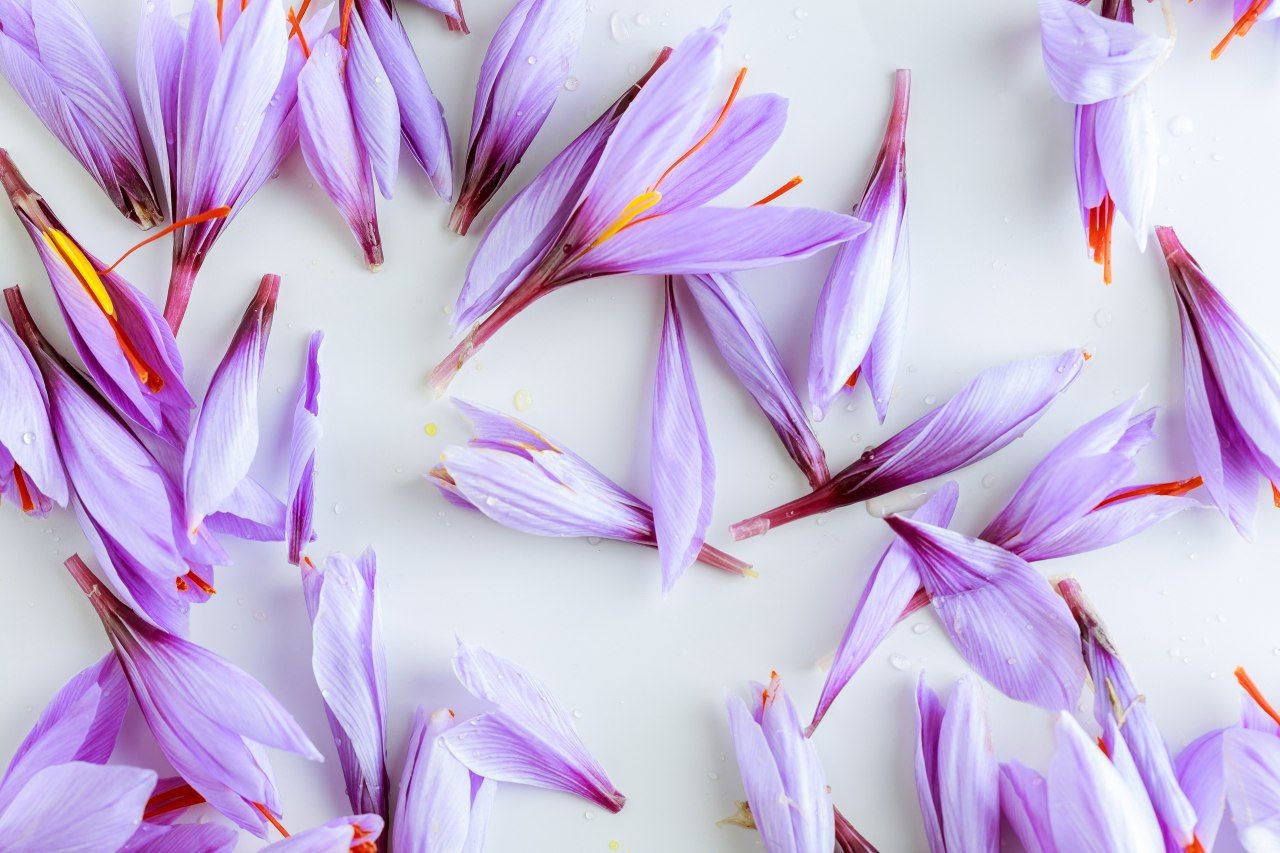Saffron is called “red gold.” With so many saffron varieties available in the market, the right selection is a tasking job. It does not matter if you are a beginner or a master in the world of saffron; you need to know all types of saffron that are out there. It is an expensive Negin saffron, Pushal or Sargol type or a relatively more affordable choice-they are different by their flavors, fragrance, and hue. I am going to speak of some popular types of saffron varieties which are Negin saffron and more on that in the main description in order to select the best suitable variety for you
What Are the Different Types of Saffron?
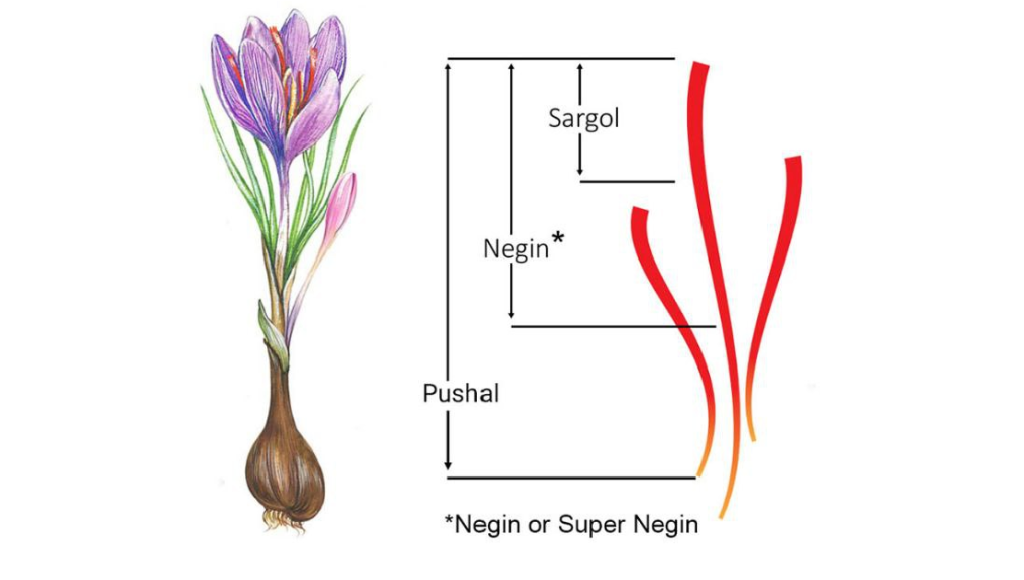
Saffron is sometimes referred to as “red gold,” and with so many available types of saffron, it may not be that easy to choose. Whether you are a foodie or a home cook, understanding what types of saffron exist will help you choose the right kind of this spice for your dish. Let’s see the most common kinds and what sets each apart.
Negin Saffron
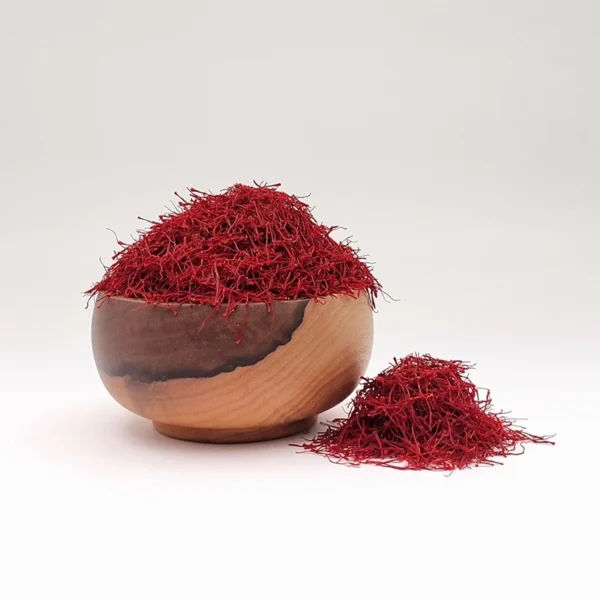
Negin saffron is the best there is in saffron. It has a rich, deep red color and a strong flavor. This makes it the most expensive type. It is sorted with so much care that it is free from any white tips, which help it look as great as it tastes. Negin is consumed in gourmet cooking and special occasions due to its strong aroma.
There are further subcategories:
Super Negin: The high color and fragrance make it the top tier; it is usually exported to countries like China.
Grade 2 Negin Saffron: Although not as posh as Super Negin, Grade 2 is nonetheless a very high-quality spice.
Pressed Negin: A less common variety with crimped stamens in order to flatten out the look, even more expensive, as it’s less available.
Semi-Negin: Still a good product but less pricey.
Unsure how to use saffron in your dishes? Check out this article for 5 delicious saffron-infused recipes to elevate your cooking: How Much Saffron To Use? A Deep Dive into 5 Delicious Recipes
Sargol Saffron
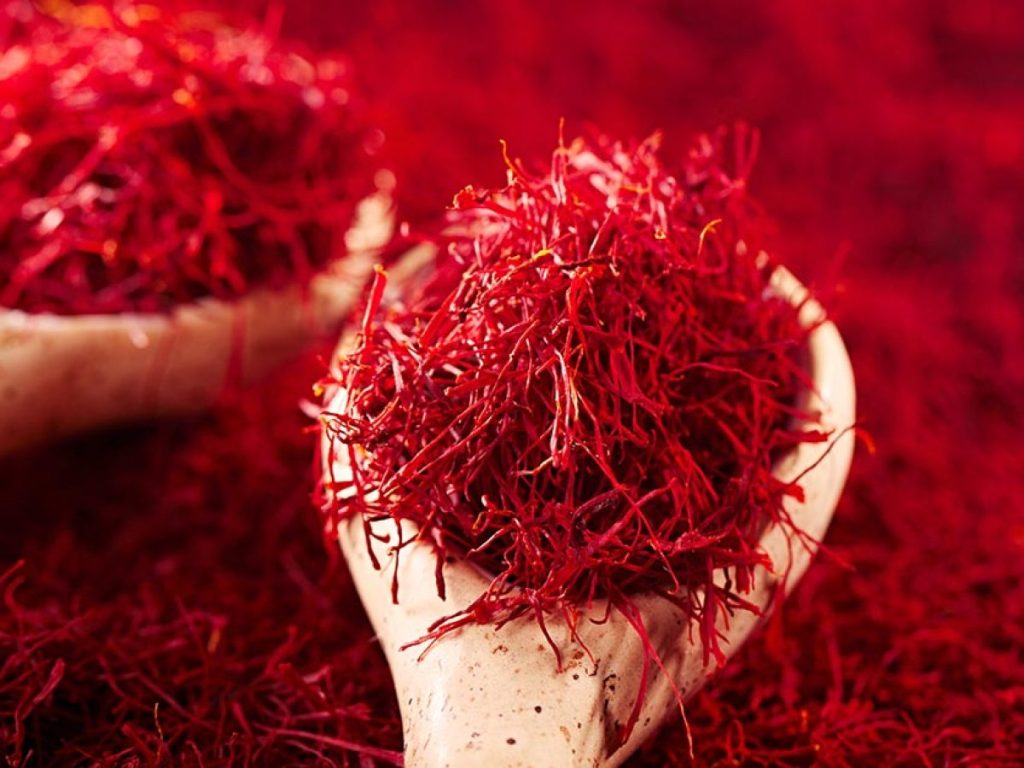
Those who prefer to have strong, full-bodied saffron should take Sargol. This product is made of only red saffron stamens without whitish parts inside; hence, there is vivid color and perfume. It generally comes touting its head quality and has a very bold flavor. It is recommended for those who intend to make something bold in their preparation.
Pushal Saffron
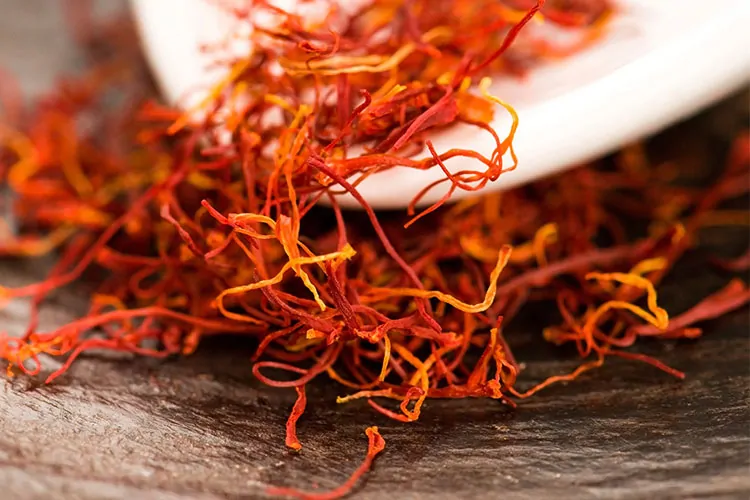
Pushal contains parts of the yellow stem, called a style, attached with the red variety of saffron. This variety can be a little cheaper and offers a good weight of colour combined with flavor; it is less diminished by the part of the weight added by the inclusion of white pieces.
Bunch Saffron (Dokhtar-Pich)
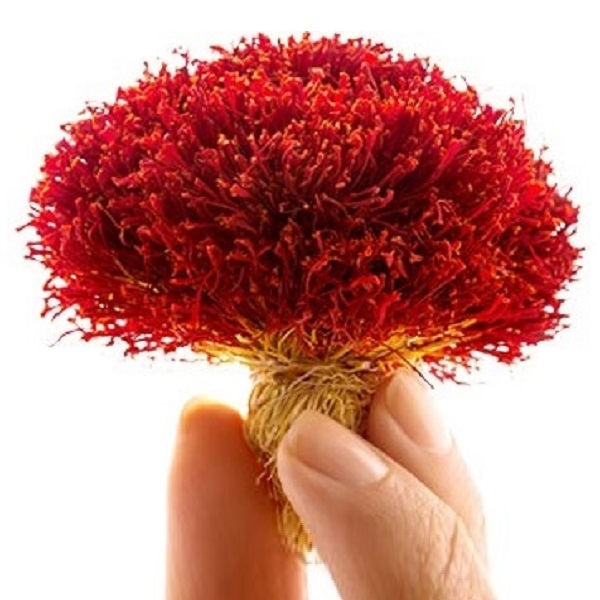
Bunch saffron is a more traditional option in which the whole stigma and style stay in place. It has a really strong aroma that people seek the total effect of saffron love. Though less abundant on the market, it is still preferred by lovers of this spice due to its strong, scented character and authenticity.
White Saffron (Root)
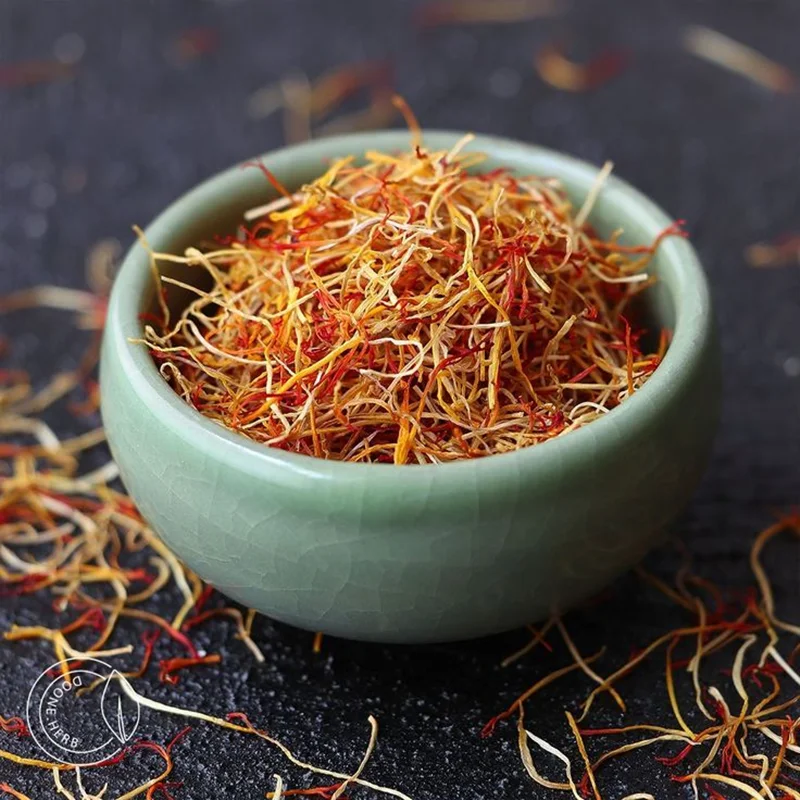
This is the white part of the saffron flower and is called style or root. It is less used in cooking and sometimes is sold for special products. It doesn’t carry the extreme flavors that the red stigma carries but finds its place in some recipes.
What is Super Negin Saffron?
Talking of types of saffron, there needs to be a word about the CV of varieties—the Super Negin saffron. This variety of saffron is not only fancy but also the crème de la crème of the spice world. Why? First of all, Super Negin saffron is all about those threads of deep red color—no yellow, no orange, no crumbs. Long, perfectly symmetric threads that scream premium quality.
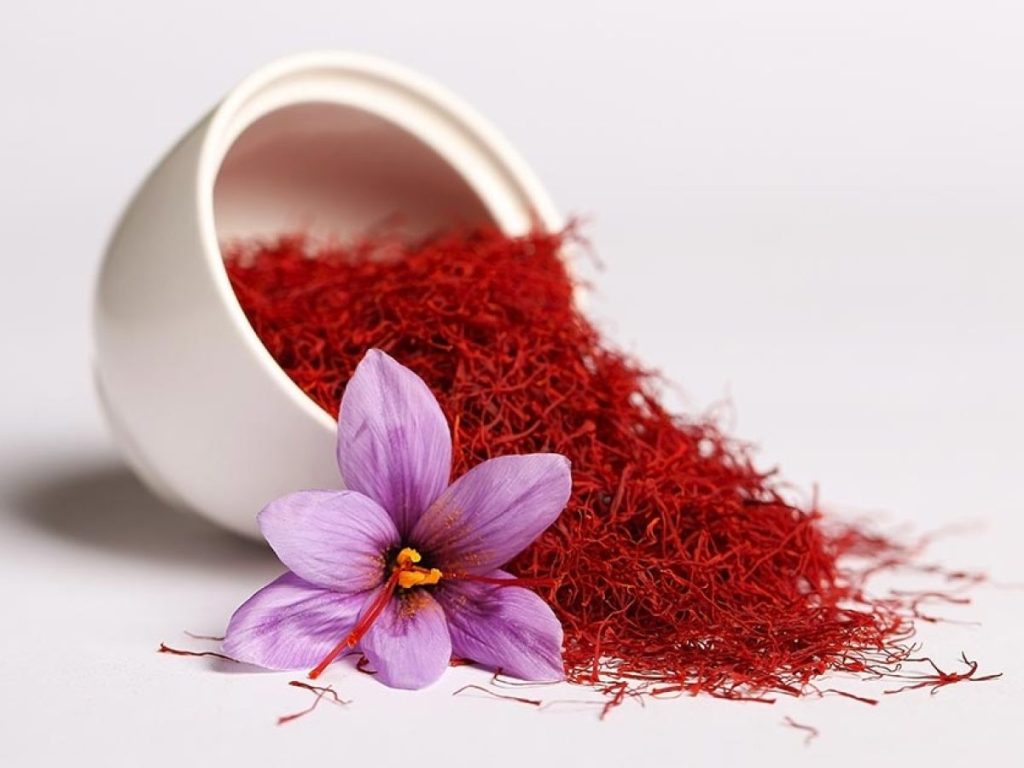
This is potent saffron grown and harvested in Iran, with a bright color and complex, earthy-sweet flavor. That signature deep red hue? It all comes down to a great concentration of crocin, which is the compound responsible for coloring and flavoring saffron so beautifully and giving the spice a bold taste. Threads are longer compared to other types, and this makes it a favorite of many gourmets.
Since saffron comes from the stigmas of the Crocus sativus flower and each flower gives just three stigmas, the harvesting of this spice is no joke-it is totally manual, which makes it one of the most expensive spices in the world. However, well, one doesn’t need much-just a pinch of the Super Negin Saffron, and the most modest dishes of paella, risotto, or some Persian and Indian dishes become masterpieces in front of your nose.
Looking to buy high-quality SuperNegin saffron? I recommend this website for premium Afghan saffron, renowned worldwide for its exceptional quality: GoldenSaffron.com
In the world of saffron, Super Negin is King. Not just spice, but an experience.
What Is Sargol Saffron?
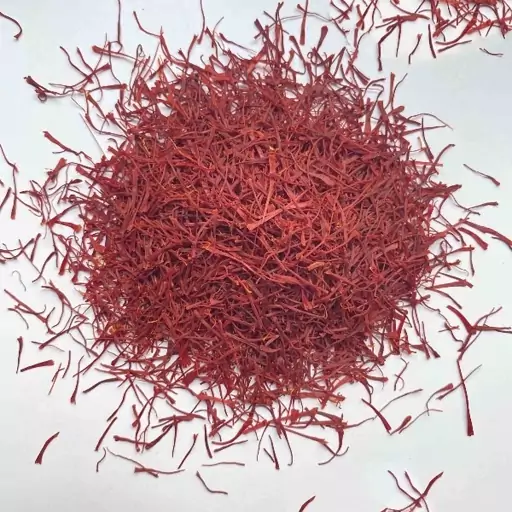
Let’s speak about one of the most premium kinds of saffron: Sargol saffron. This variety, better known as “premium saffron,” is noted for its brightly colored red threads, pungent aroma, and great coloring ability. “Sargol” means the “top of the flower,” and appropriately so, since it’s made from the pure red tips of saffron stigmas. Unlike other forms of saffron, Sargol does not contain these yellow or white parts, so you get the best quality, rich in flavor and color.
What is so special about Sargol saffron? Having deep red threads, it has a strong, earthy, floral fragrance, and the purity is just incomparable. If you put real Sargron saffron in water, it does not release the color immediately-it takes 15-20 minutes, which means it is the real thing. Also, the threads are thick, even, and without any yellow pieces, visually catching a glimpse of super quality.
This type of saffron is the jack of all trades. It is widely used in the kitchen to give rice, sweets, and stews, among others, that golden signature and rich flavor. Outside the kitchen, it is also valued for wellness because of its antioxidants, which help improve one’s mood, digestion, and overall health. No wonder it is highly in demand at luxury markets and amongst international traders. It simply is the best class of saffron.
While a little more on the pricey side, Sargol saffron gives unparalleled quality, strong flavor, and fantastic color, hence well worth it. In case you seek some sort of saffron to take your cooking or wellness to the top, Sargol is your answer!
What Is Pushal Saffron?

Pushal Saffron is one of those varieties of saffron that have bright yellow strands combined with the signature red threads. At the same time, it is reasonably affordable without compromising much on flavor or fragrance. Pushal is good for seekers who pursue an affordable price but real saffron. What is special about Pushal Saffron is that this is harvested with bits of yellow style still attached to the red threads, making it hard to counterfeit. Therefore, it retains all the health benefits of saffron and can provide that full-thread experience.
There are a few different types of Pushal saffron. First, there is weak Pushal, which has thin, fragile threads and often comes from less-than-ideal growing conditions, like poor soil or water shortages. Then, there is the standard Pushal, which has thicker threads and much better aroma and flavor. For the best of the best, there’s Pushal Qalamdar, or Premium Pushal, which is top-tier with long, thick red threads and minimal yellow parts. Plus, there is no saffron dust in this one.
As for differences between Pushal and Sargol saffron, Pushal has that yellow style attached, while Sargol is all about pure red threads. Pushal threads are longer and more connected, while Sargol tends to be shorter and broken. Pushal is generally more affordable because the yellow style is not as expensive as the pure red threads used in Sargol. In the kitchen, Pushal is great for everyday dishes, desserts, and drinks, while Sargol is often used for gourmet cooking or as a special gift.
What Is Bunch Saffron?
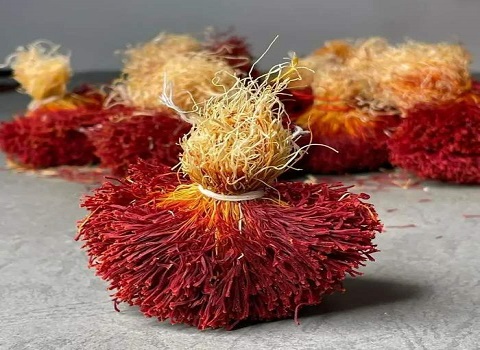
When it comes to saffron varieties, Dokhtar-Pitch saffron, also known as Bunch Saffron, is an affordable yet high-quality option that packs a punch in both flavor and health benefits. While it’s often referred to as the “mother of all saffrons,” it stands out among other saffron types for its unique properties and excellent value. So, why should you consider adding it to your spice rack or wellness routine? Let’s dive into everything you need to know.
What’s Dokhtar-Pitch Saffron All About?
Dokhtar-Pitch saffron is harvested by drying the entire plant, meaning it includes both the red stigmas and the yellowish root parts of the saffron flower. Unlike more refined types like Negin, which only feature the red strands, Dokhtar-Pitch saffron is made up of around 75% red, with the remaining 25% being yellow and white root sections. The more red you find in your saffron, the more potent the flavor and color intensity.
Why is it Called Dokhtar-Pitch?
This saffron gets its name from this very old tradition when young girls (daughters) would help in the very tedious process of harvesting and sorting saffron in the fields. The name “dokhtar-pitch” reflects this rich cultural practice whereby strands of saffron are left whole, including both the red and yellow parts, unlike more refined types like Negin or Sargol.
Types of Dokhtar-Pitch Saffron
There are mainly two kinds of Dokhtar-Pitch saffron: one-way and two-way. During the one-way type, the red stigmas are packed together, with the yellow root sections at the bottom. However, in the two-way type, the middle cream part of the stigma faces the center, flanked by the red stigmas. Though they are different in appearance, both varieties provide benefits in equal measure.
What Is White Saffron?
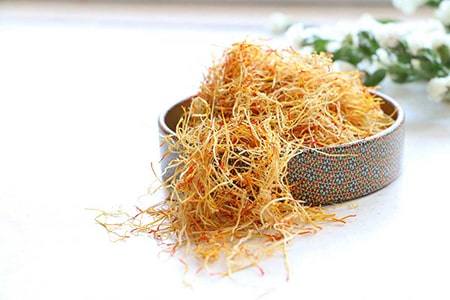
Speaking about saffron, there are red threads-actually, the prize of this gold. But do you know it does have a white part also? Let’s break down what the white saffron-or Dokhtar-Pich is and why it is so particular.
Saffron is derived from a purple flower, and each flower creates both red stigmas-that is, that part you’re most familiar with-and a white root. Usually, you would be used to seeing the red stigmas in threads of saffron, but the white part, “Krameh,” is an equally important part. There are a number of varieties of saffron, since different parts of flowers may be gathered in order to harvest it. The Dokhtar-Pich, or Clustered Saffron, features a bundle of red and white parts together, making it very unique. Sargol means Pure Red Saffron, containing only the red stigmas, and is the most flavorful and vibrant type of saffron.
Although white saffron does not bear the bright golden color-the credit for which goes to a component called crocin-it is still loaded with beneficial values. The treatment of prostate cancer, improvement of sexual vitality, rheumatic diseases, liver ailments, and improvement of memory and eyesight are just some of the major benefits derived from using white saffron. Though it doesn’t contain that mighty kick of color, its contribution to the medicinal world is surely not forgotten. Since it does not contain crocin, white saffron will not yield a golden color and hence would be apt for those recipes wherein one desires to savor the flavor and not the color. It works during the stewing of meat and vegetables, soups, rice, and baked items. White saffron finds its way into the pharmaceutical and natural dye industries for coloring and therapeutic purposes, too.
A Brief on Types of Saffron: Which Is Perfect for What?
Saffron comes in several different varieties, each carrying its own distinctive flavors and qualities. Knowing the differences can greatly help one to choose the right type of saffron for whatever purpose he may have, be it gourmet food dishes or just a cheap variant. Below is a short overview of the most common types of saffron.
| Type of Saffron | Type of Saffron | Unique Features |
| Negin Saffron | The crème de la crème of saffron with deep red threads and powerful flavor. Known for its intense aroma. | Super Negin (top-tier), Grade 2 Negin, Pressed Negin (rarer, flat threads), Semi-Negin (affordable). |
| Super Negin | Bold and fragrant with vibrant red threads, offering strong flavor and aroma. Pure red tips of the stigma. | High-quality, bold flavor, thick and uniform threads, perfect for gourmet dishes. |
| Sargol Saffron | Includes parts of the yellow stem (style), making it more affordable. Bright yellow strands mixed with red. | Weak Pushal (fragile threads), Standard Pushal (better aroma), Pushal Qalamdar (premium, minimal yellow). |
| Pushal Saffron | Traditional type with both red stigmas and yellow root parts, providing a powerful aroma. | Unique, 75% red, 25% yellow and white root. Rich flavor and authentic. |
| Bunch Saffron (Dokhtar-Pich) | The white part of the saffron flower, not used for cooking, but for specialty products. | No color, but used for medicinal purposes and in the pharmaceutical industry. |
| White Saffron (Root) | The best-quality Negin saffron with deep red threads and a complex, earthy-sweet flavor. | Longer threads, high crocin content, the top-tier quality in the saffron world. |
Whatever type of saffron you go for, there is something special in each for adding magic to your cooking or wellness program.
Conclusion
Knowing the kinds of saffron-from super-premium Negin to the more affordable Pushal-allows you to make the right decision for your cooking needs. Whatever your aim-intense flavor, vibrant color, or a balance of both-each has that something that only adds to your dish. Try these options, add the golden touch of saffron to dishes, and let your culinary masterpiece shine with delight.

